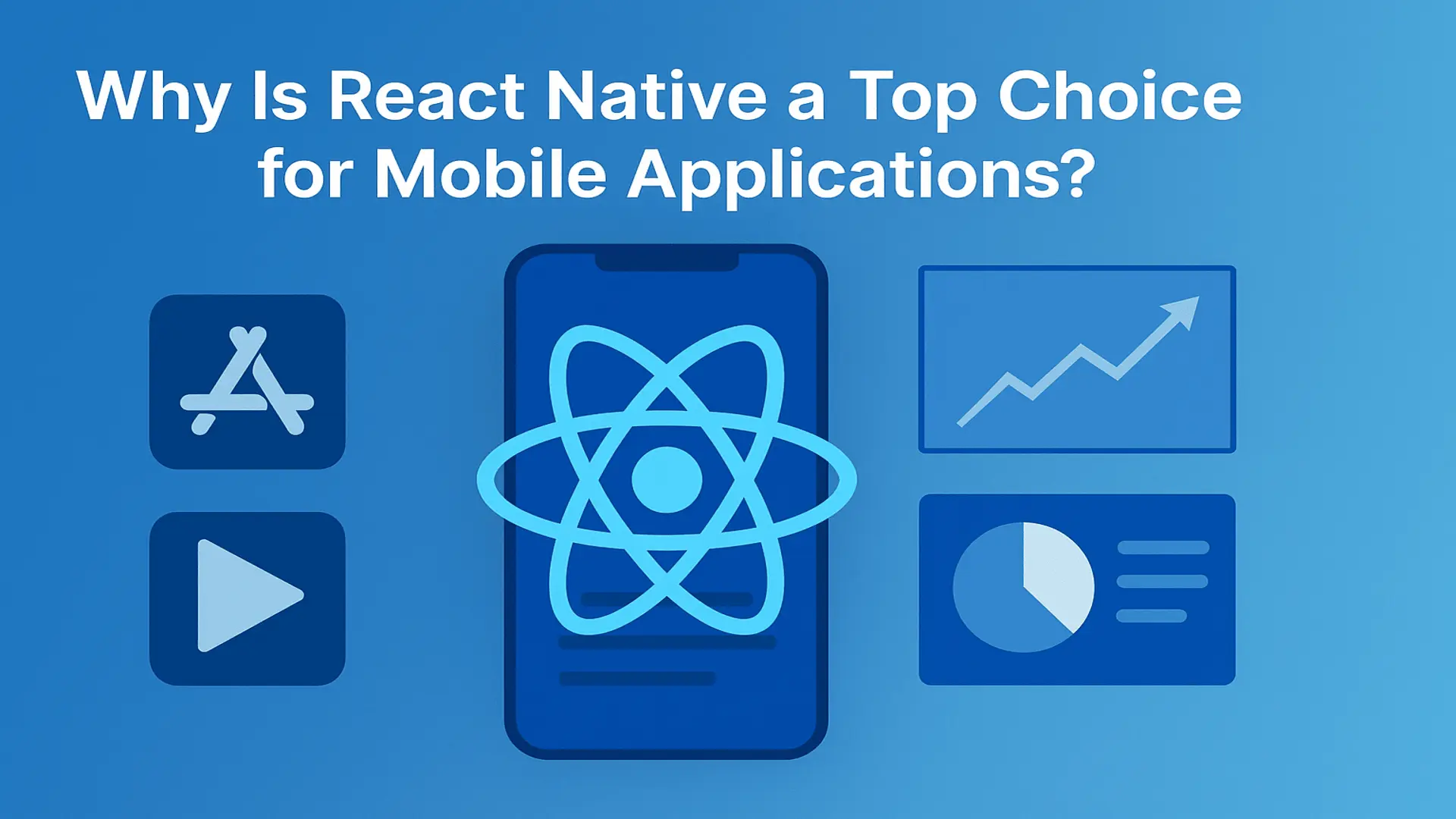Why Is React Native a Top Choice for Mobile Applications?

Image Credit: ChatGPT
Table of Contents
- What Is React Native
- Benefits of React Native in Mobile App Development
- Single Codebase for iOS and Android
- Near-Native Performance
- Strong Community and Ecosystem
- Modern Architecture Enhances React Native Further
- Real-Life Use Cases of React Native
- Limitations to Consider
- SEO and ASO Tips for React Native Mobile Apps
- The Future of React Native
- Conclusion
React Native for Mobile Applications continues to be a popular framework, offering an ideal combination of performance, efficiency, and cross-platform support. With businesses seeking to reduce time-to-market and development costs, React Native enables teams to build apps for iOS and Android using a single codebase, without sacrificing user experience.
In the United States, adoption is strong. According to Statista, around 35% of software developers were using React Native by 2023, a number that is increasing year after year. Google Trends data indicates sustained interest, particularly in major tech hubs like San Francisco, New York, and Austin.
This article explores what makes React Native an excellent choice for mobile applications and why it continues to lead in 2025 and beyond.
What Is React Native
React Native is an open-source mobile application framework developed by Meta (formerly Facebook). It allows developers to use JavaScript and React to build apps that render using native components. Unlike traditional hybrid solutions, React Native delivers near-native performance and appearance while minimizing the duplication of work across platforms.
The framework supports multiple platforms, including iOS, Android, Web, Windows, and macOS. With growing support for emerging platforms like VisionOS, React Native continues to expand its utility across device ecosystems.
Benefits of React Native in Mobile App Development
Single Codebase for iOS and Android
React Native allows developers to maintain one codebase that runs on both platforms. This significantly reduces development time, effort, and cost. It also simplifies updates and maintenance, as teams no longer need to manage two separate codebases.
This single-source approach improves consistency and speeds up delivery cycles, especially beneficial for startups, MVPs, and enterprise apps targeting broad user bases.
Custom AI Software Development Solution For Enterprises
Near-Native Performance
React Native bridges JavaScript code with native platform components, enabling apps to interact directly with the device’s hardware and software. This results in faster load times, smooth animations, and native-like responsiveness.
React Native also takes advantage of GPU acceleration, ensuring that performance-intensive tasks such as image processing, transitions, and data rendering are handled efficiently.
Strong Community and Ecosystem
React Native enjoys strong support from the global developer community. With over 121,000 stars on GitHub and an ecosystem enriched by tools like Expo, React Navigation, and Reanimated, developers have access to libraries, documentation, and integrations that speed up development.
Backed by Meta and used by global brands, the ecosystem is mature and reliable, which is an important factor for businesses evaluating long-term tech investments. Companies like Cloudester Software often recommend React Native to clients looking for scalable, future-ready solutions.
Modern Architecture Enhances React Native Further
React Native’s recent updates have introduced a new architecture designed to improve app performance and developer experience. These include:
- Fabric: A new rendering system that improves UI responsiveness and simplifies layout calculations.
- TurboModules: Load native modules only when needed, which optimizes memory usage and speeds up the app’s startup time.
- Hermes: A JavaScript engine developed by Meta, designed specifically for React Native. It reduces app size and improves runtime performance.
- Concurrent React: Allows asynchronous rendering and prioritization of user interactions, making the interface feel more responsive and fluid.
These upgrades reflect the framework’s commitment to keeping pace with the demands of modern mobile applications.
Real-Life Use Cases of React Native
Several well-known companies have successfully adopted React Native in their mobile strategies.
- Facebook uses React Native for parts of its main app and its Ads Manager, highlighting its scalability for high-traffic environments.
- Shopify transitioned large portions of its merchant mobile app to React Native to enable faster development and maintain consistency across devices.
- Walmart applied React Native to unify its app development efforts. The result was a shared codebase for iOS and Android, improved performance, and reduced development costs.
These examples demonstrate how React Native is trusted by some of the largest digital platforms to deliver performance at scale.
Limitations to Consider
While React Native offers significant advantages, there are some limitations.
Apps that require advanced graphics or animations, such as 3D games or complex visualizations, may perform better with native development. Additionally, access to the latest hardware APIs may lag slightly behind native SDKs.
In such cases, developers might need to write native modules and bridge them to the React Native layer, which requires additional effort and platform-specific expertise.
However, for most businesses, productivity, and consumer apps, React Native offers more than enough flexibility and power.
SEO and ASO Tips for React Native Mobile Apps
Once your app is built, getting it discovered is the next challenge. Here are a few best practices for improving visibility in app stores:
- Use relevant keywords such as “React Native mobile app,” “cross-platform app,” and “mobile app development” in the app’s title and description.
- Include high-quality screenshots and preview videos to showcase user experience and functionality.
- Update your app regularly and include keyword-rich release notes.
- Encourage positive user reviews and ratings, as these significantly influence visibility in both the App Store and Google Play.
These steps help increase organic reach and improve install rates.
The Future of React Native
React Native is well-positioned for future growth. As demand for platform-agnostic apps grows, the framework is evolving to support new technologies and user experiences.
- Cross-platform expansion is gaining momentum with support for web, desktop, and even emerging platforms like VisionOS.
- AI integration is becoming more common, with React Native supporting integration of TensorFlow Lite and other ML libraries.
- Server-driven UI architectures are being explored to dynamically update app layouts without requiring new deployments.
These advancements ensure that React Native remains a forward-compatible framework for building next-generation apps.
Also read: 3 Awesome Cross-Platform Frameworks for Mobile App Development
Conclusion
React Native stands out in mobile app development for its flexibility, speed, and strong developer support. With a single codebase, near-native performance, and a powerful ecosystem, it addresses the needs of businesses looking to deliver high-quality apps efficiently.
For businesses exploring efficient cross-platform solutions, React Native for Mobile Applications delivers performance, flexibility, and future-readiness. Its continued evolution makes it a strategic choice for app development in 2025 and beyond.
To explore how React Native can fit into your development strategy, reach out to the experts at Cloudester Software.









